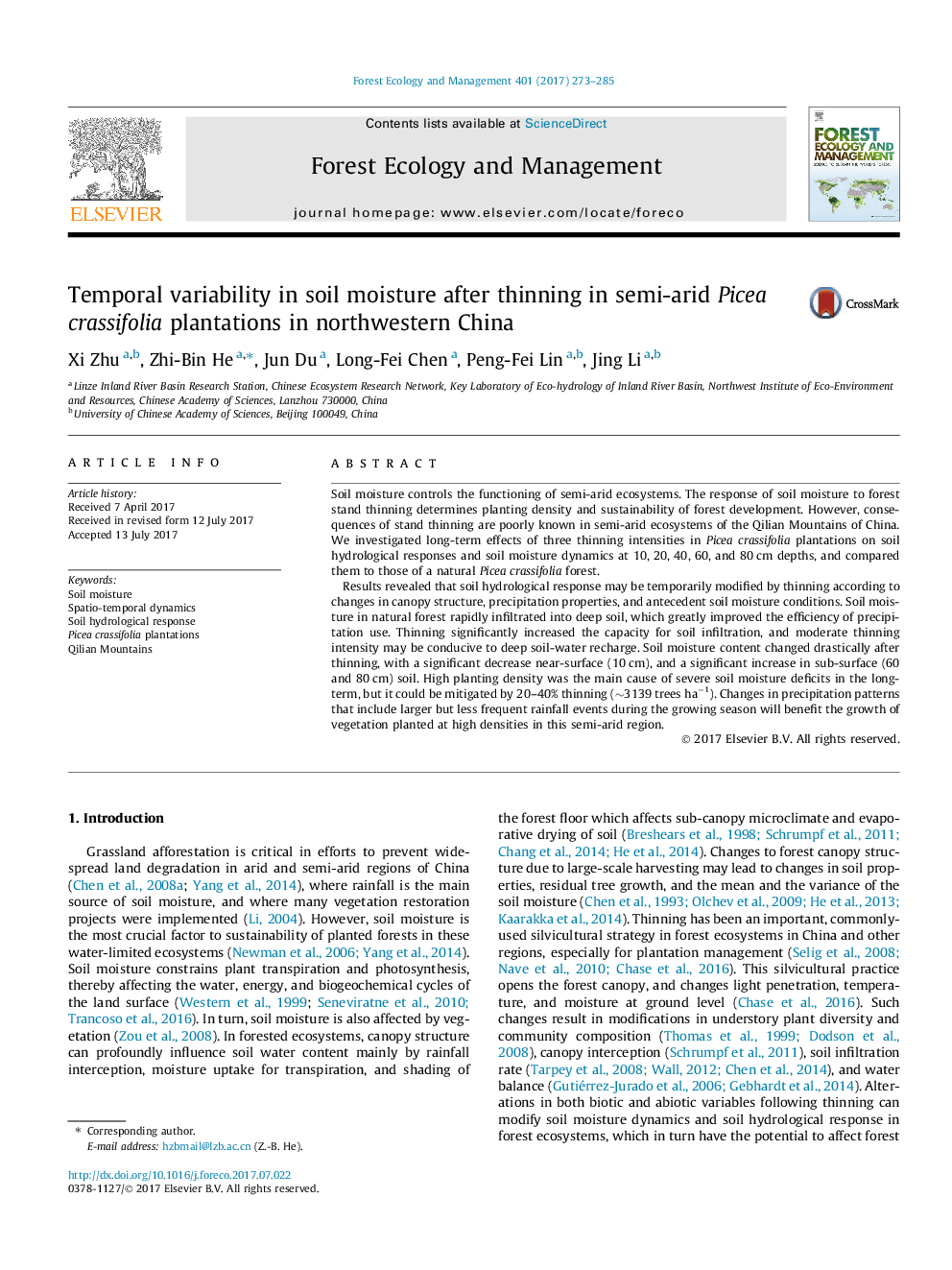| Article ID | Journal | Published Year | Pages | File Type |
|---|---|---|---|---|
| 4759321 | Forest Ecology and Management | 2017 | 13 Pages |
Abstract
Results revealed that soil hydrological response may be temporarily modified by thinning according to changes in canopy structure, precipitation properties, and antecedent soil moisture conditions. Soil moisture in natural forest rapidly infiltrated into deep soil, which greatly improved the efficiency of precipitation use. Thinning significantly increased the capacity for soil infiltration, and moderate thinning intensity may be conducive to deep soil-water recharge. Soil moisture content changed drastically after thinning, with a significant decrease near-surface (10Â cm), and a significant increase in sub-surface (60 and 80Â cm) soil. High planting density was the main cause of severe soil moisture deficits in the long-term, but it could be mitigated by 20-40% thinning (â¼3139 trees haâ1). Changes in precipitation patterns that include larger but less frequent rainfall events during the growing season will benefit the growth of vegetation planted at high densities in this semi-arid region.
Related Topics
Life Sciences
Agricultural and Biological Sciences
Ecology, Evolution, Behavior and Systematics
Authors
Xi Zhu, Zhi-Bin He, Jun Du, Long-Fei Chen, Peng-Fei Lin, Jing Li,
